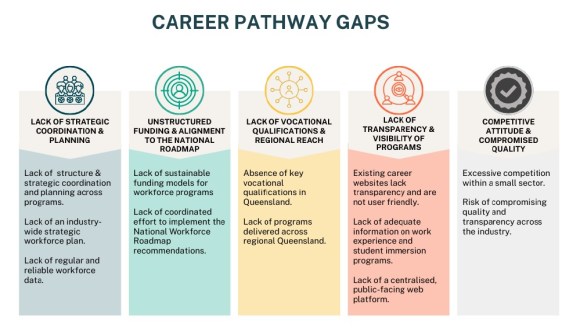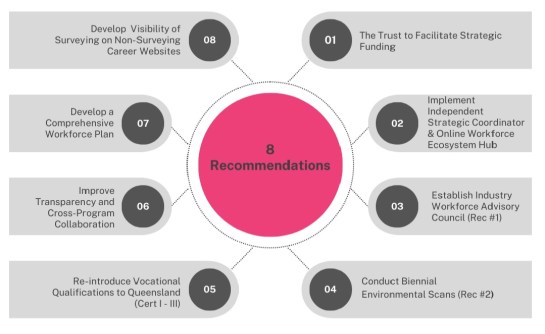
The Surveyors’ Trust has released a new report that provides an in-depth analysis of the state of the surveying workforce in Queensland, and which provides lessons and guidance for the wider surveying community nationwide.
The Queensland-based organisation commissioned the research to “further refine and expand the strategic approach to sustainable workforce development” in Queensland, and foster “improved coordination and collaboration throughout the industry”.
The research paper, Transforming the Surveying Industry Workforce Ecosystem:
- Addresses critical issues by mapping existing workforce programs across the region and delineating areas where further attention is needed.
- Identifies key gaps and overlaps, as highlighted in an earlier report (The Australian Surveying and Spatial Workforce – A National Roadmap).
- Proposes solutions that align with the identified needs.
The paper also adds to the marketing and communication strategies outlined in another Surveyors’ Trust workforce paper, A National Career Pathway for Surveyors, providing “actionable strategies to elevate industry engagement and visibility”.

The research notes that surveying is often regarded as an ‘invisible occupation,’ at least in comparison with other career choices such as architecture, engineering and urban planning.
Importantly, the paper points out that that, while there are many surveying career promotion initiatives aimed at high-school students, “there is a notable gap in engaging existing workers and promoting ‘return-to-work’ initiatives”. While this is presently a weakness of the system, it does in fact present an opportunity to widen the catchment area of potential surveyor recruits.
Allied to that is the fact that “vocational education and training (VET) continues to face challenges, particularly a shortage of transitional programs for school leavers requiring Certificate II and III qualifications,” the paper says.
And of course, the report advocates for more efforts to improve the diversity of the surveying workforce.
Eight recommendations are made to solve the issues identified:
- The Trust should provide strategic funding across multiple programs to encourage greater collaboration and alignment and address market gaps.
- The Trust should appoint an Independent Strategic Coordinator and establish an online workforce ecosystem hub to “streamline coordination, improve transparency, and foster a unified approach to workforce development”.
- The Trust should oversee the establishment of an Industry Workforce Advisory Council to ensure strategic alignment and foster collaboration.
- The Trust should oversee the development of Biennial Environmental Scans, with a rolling ten-year forecast, which gathers data on “project pipelines, industry trends, workforce needs and resource allocation, aiding in forecasting, funding and strategic planning”.
- The industry should strengthen advocacy efforts to re-introduce vocational qualifications, by coordinating collaboration with the Queensland Government and TAFE Queensland to develop and provide structured pathways for entry-level qualifications.
- Improve transparency and cross-program collaboration to boost “transparency in disseminating information related to surveying careers and pathway programs”.
- Formulate a Comprehensive Workforce Plan that outlines long-term goals, strategies for achieving them and metrics for measuring success.
- Develop greater visibility of surveying as an occupation on non-surveying career websites.

“Greater collaboration across the industry is essential to addressing these challenges,” the report says.
“The findings underline the need for greater transparency about the programs offered and advocate for implementing key recommendations from previous studies, such as establishing a national workforce task force and conducting an environmental scan.
“These steps are critical to advancing workforce development, improving the efficacy and reach of programs, and ensuring a coordinated, strategic approach to workforce development across the industry.”






